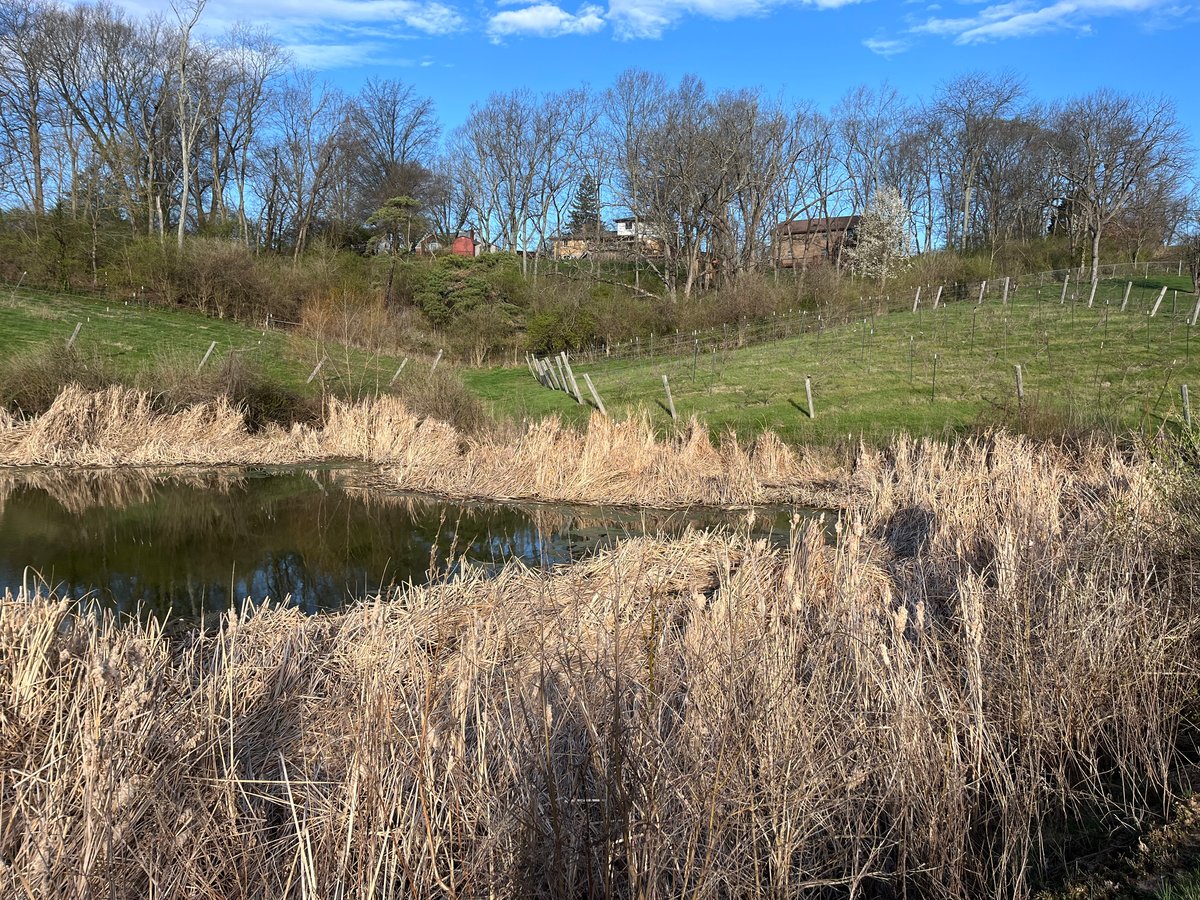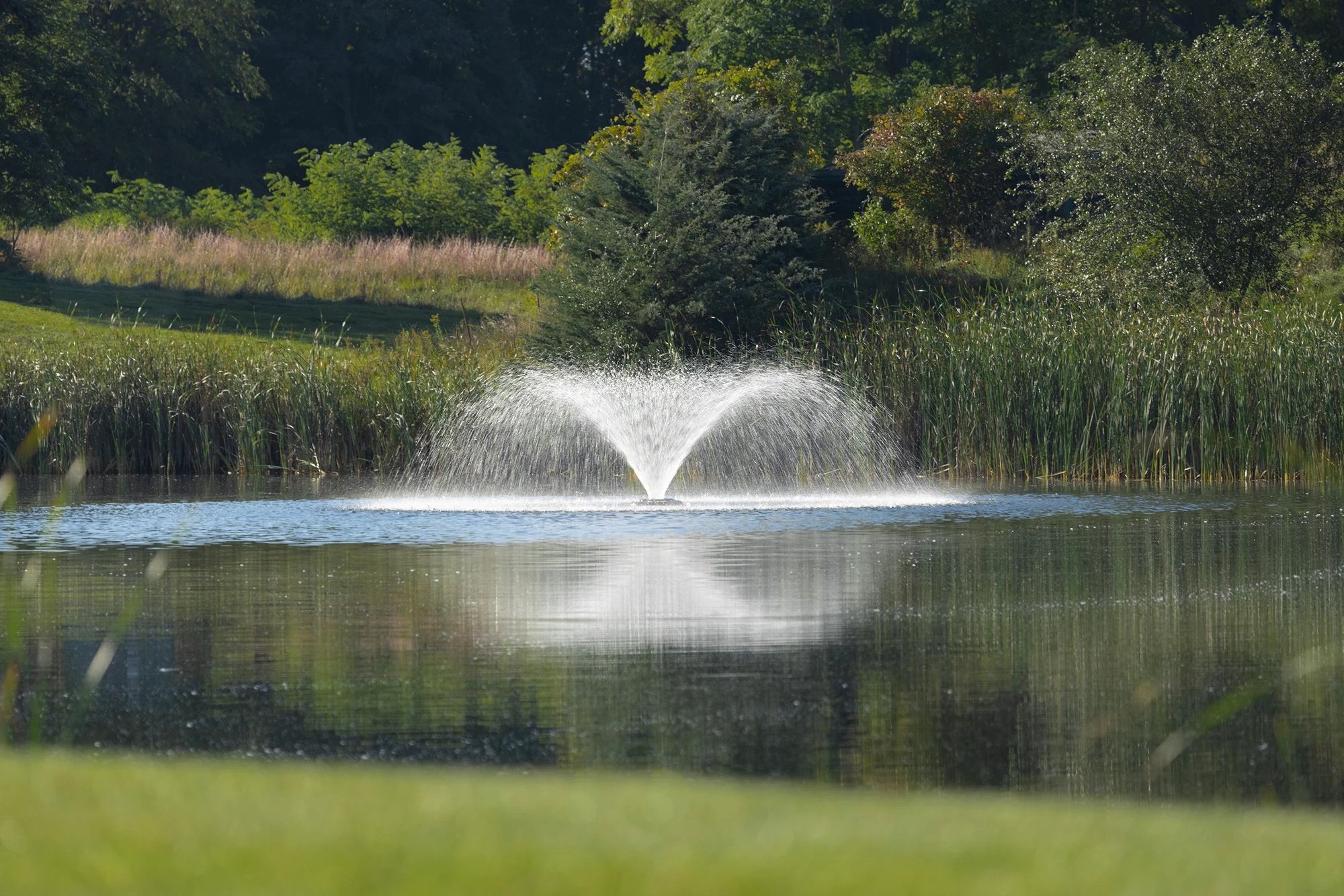
Cattails are a common and often beautiful sight along ponds, lakes, and wetlands. They provide critical habitat for birds, amphibians, fish, and insects. However, when invasive species like Narrowleaf Cattail (Typha angustifolia) and Hybrid Cattail (Typha x glauca) take over, they can quickly disrupt the natural balance. These fast-spreading cattails form dense colonies that crowd out native plants, decrease biodiversity, and degrade wetland health. Managing these invaders responsibly is essential to support thriving aquatic ecosystems.
At Water and Wetland, we believe in sustainable cattail management practices that protect and restore natural habitats. Here's how we approach invasive cattail control without compromising the health of your pond, wetland, or shoreline.
The Impact of Narrowleaf and Hybrid Cattails
Invasive cattails multiply rapidly by releasing seeds and expanding through underground rhizomes. As they spread, they create thick mats that block sunlight, smother native species, and change the water flow patterns critical for wetland function. Left unmanaged, these monocultures transform diverse wetlands into dense, stagnant reed beds. Effective pond management strategies must focus on reducing invasive cattail dominance while preserving native ecosystems.
Instead of total vegetation removal, the goal of invasive cattail control is to restore natural diversity and functionality. Here’s how we do it:
Using Selective Herbicide Treatments
Applying aquatic-safe, selective herbicides is a trusted method for controlling invasive cattails without harming surrounding wildlife. These products target plant-specific enzymes, making them safe for fish, frogs, and other aquatic animals. At Water and Wetland, we apply herbicides through precise spot treatments rather than blanket applications. Treating cattails in late summer or early fall ensures the herbicide is absorbed deep into the plants’ root systems, making the treatments more effective and environmentally responsible.
Physical Removal and Biomass Management
Herbicide application is only part of the solution. Removing the dead cattail material is crucial to prevent excess nutrients from re-entering the water and fueling future invasive growth. Our team uses specialized equipment to cut cattails at the waterline and remove the debris, improving water quality and preventing the buildup of organic matter that can contribute to algae blooms and other water quality issues. Cattail cutting and biomass removal are essential steps in promoting a healthier aquatic environment.
Native Plant Restoration
After invasive cattails are removed, it’s vital to stabilize and rebuild the area with native wetland plants. Reintroducing species like bulrushes, pickerelweed, and sedges helps outcompete any remaining invasive cattails, prevents erosion, and enhances overall ecosystem resilience. Native plant restoration not only adds beauty but also supports a wide range of wildlife species that depend on diverse wetland habitats.
Managing Cattails in Stormwater Basins
Invasive cattails aren’t just a problem in natural wetlands—they also clog stormwater detention basins, reducing storage capacity and obstructing drainage. Over time, this can lead to flooding and costly maintenance problems. Water and Wetland provides comprehensive stormwater basin services, combining targeted herbicide treatments with biomass removal to maintain proper flow and capacity, ensuring your system remains functional and environmentally healthy.
The Importance of Long-Term Maintenance
Invasive cattail control is not a one-and-done project. Consistent monitoring, annual treatments, and continued native plant establishment are critical for long-term success. With regular wetland management services, we help property owners maintain diverse, functional ecosystems where native species thrive, and invasive plants stay in check.
At Water and Wetland, we are committed to delivering environmentally conscious solutions that balance effective cattail control with habitat preservation. Whether you're managing a natural wetland, a pond, or a stormwater basin, our science-backed strategies are designed to meet your specific needs. Contact Water and Wetland today to learn how our expert team can help protect your aquatic ecosystem through sustainable cattail control and wetland restoration!
About Water & Wetland, A Jones Lake Management Partner
Water & Wetland is a trusted expert in lake, pond, and wetland management, providing innovative and environmentally responsible solutions to control invasive species, restore shorelines, and improve water quality. As a Jones Lake Management Partner, we serve HOAs, golf courses, municipalities, and private landowners with customized lake and pond management plans designed to promote long-term ecological health. We understand the importance of proper permitting and regulatory compliance, ensuring that all projects meet local, state, and federal environmental standards. With a commitment to sustainability and science-based practices, Water & Wetland helps clients maintain thriving, well-balanced waterbodies.
